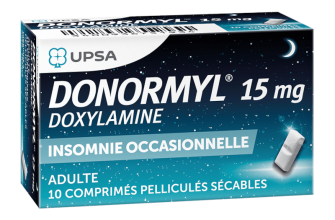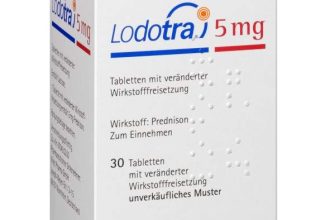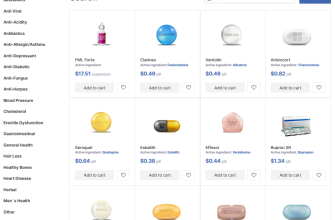Ciprofloxacin is not a treatment for scabies. This antibiotic targets bacteria, while scabies is caused by a mite, Sarcoptes scabiei. Attempting to treat scabies with ciprofloxacin will be ineffective.
Effective scabies treatment requires medications specifically designed to kill the mites. Your doctor can prescribe topical treatments like permethrin cream or ivermectin lotion. These are applied to the skin and kill the mites directly. Oral ivermectin might also be an option in certain cases.
Complete eradication requires diligent application of the prescribed medication according to your doctor’s instructions. Furthermore, thorough cleaning of bedding, clothing, and personal items is crucial to prevent re-infestation. Ignoring these steps significantly increases the chance of re-infection.
Remember: Always consult a medical professional for diagnosis and treatment. They can accurately identify your condition and recommend the most appropriate and safe treatment plan. Self-treating scabies can prolong the infection and potentially lead to complications.
- Scabies and Ciprofloxacin: Understanding the Misconception
- What is Scabies and How is it Treated?
- Diagnosis and Confirmation
- Treatment Options
- Managing Itch and Preventing Spread
- Seeking Medical Attention
- Why Ciprofloxacin is Ineffective Against Scabies
- Understanding the Difference
- Proper Treatment Options
- Common Misunderstandings Regarding Scabies Treatment
- Effective Treatments for Scabies: A Guide
- Preventing Scabies: Hygiene and Precautions
- Regular Cleaning is Key
- Personal Hygiene Practices
- Preventing Future Infestations
- Seeking Medical Advice
- Seeking Professional Medical Advice for Scabies
Scabies and Ciprofloxacin: Understanding the Misconception
Ciprofloxacin is an antibiotic, targeting bacteria. Scabies, however, is caused by a mite, Sarcoptes scabiei. Therefore, ciprofloxacin is completely ineffective against scabies.
Treating scabies requires scabicides, medications specifically designed to kill mites. Common treatments include permethrin cream and ivermectin. Your doctor will determine the best option for you, considering factors like age and overall health.
Misuse of antibiotics like ciprofloxacin contributes to antibiotic resistance. This resistance makes antibiotics less effective against bacterial infections, making them harder to treat. Using the correct medication is vital for effective treatment and public health.
| Medication Type | Effective Against Scabies? | Mechanism of Action |
|---|---|---|
| Ciprofloxacin | No | Kills bacteria |
| Permethrin | Yes | Kills mites |
| Ivermectin | Yes | Kills mites |
Always consult a doctor or other qualified healthcare professional for diagnosis and treatment of scabies. Never self-medicate, especially with antibiotics.
What is Scabies and How is it Treated?
Scabies is a contagious skin infestation caused by the Sarcoptes scabiei mite. The mite burrows into your skin, laying eggs that cause intense itching, especially at night. This itching is your body’s reaction to the mite’s presence and its waste products.
Diagnosis and Confirmation
A doctor diagnoses scabies by examining your skin for characteristic burrows–tiny, raised lines on the skin. Sometimes a skin scraping is needed to confirm the presence of mites under a microscope. Don’t self-diagnose; see a doctor for accurate identification.
Treatment Options
Treatment typically involves topical medications applied to the entire body from the neck down. These medications kill the mites. Commonly prescribed treatments include permethrin cream (5%) and malathion lotion. You will need to follow your doctor’s instructions carefully regarding application and duration of treatment. All household contacts should also be treated to prevent re-infestation. A single application might not be sufficient; repeat applications might be necessary. Your doctor will advise on the best treatment plan for you and your situation. Note that Ciprofloxacin is an antibiotic and is not used to treat scabies. It addresses bacterial infections, not parasitic ones.
Managing Itch and Preventing Spread
The itching can persist for several weeks even after treatment because of the body’s reaction to the dead mites and their waste. Over-the-counter anti-itch creams can help alleviate discomfort. Wash all bedding, clothing, and towels in hot water and dry them in a hot dryer to kill any mites that might remain on these items. This step significantly aids in preventing the spread.
Seeking Medical Attention
If your symptoms don’t improve after treatment, or if you experience severe symptoms, return to your doctor. They can assess your condition and adjust the treatment plan accordingly.
Why Ciprofloxacin is Ineffective Against Scabies
Ciprofloxacin targets bacteria, not parasites. Scabies is caused by the Sarcoptes scabiei mite, a tiny arachnid. Antibiotics like ciprofloxacin are useless against this parasite.
Understanding the Difference
This is a crucial distinction: antibiotics fight bacteria; antiparasitics fight parasites. Using the wrong treatment won’t cure scabies and could delay proper treatment.
- Ciprofloxacin: Treats bacterial infections.
- Scabies: Caused by a microscopic mite.
- Treatment: Requires scabicides like permethrin or ivermectin, prescribed by a doctor.
Proper Treatment Options
- See a doctor: Accurate diagnosis is vital. A dermatologist can confirm scabies and prescribe the correct medication.
- Follow instructions: Thoroughly apply prescribed scabicide to cover all skin. Repeat applications are usually necessary.
- Treat all contacts: Family members or close contacts should also be examined and treated to prevent re-infestation.
- Maintain hygiene: Wash all bedding and clothing in hot water.
Ignoring these steps can prolong the infection. Consult a medical professional for the appropriate treatment of scabies.
Common Misunderstandings Regarding Scabies Treatment
Ciprofloxacin is not a scabies treatment. This antibiotic targets bacteria, not the Sarcoptes scabiei mite causing scabies. Treating scabies requires scabicides like permethrin or ivermectin.
One application isn’t always enough. Follow your doctor’s instructions precisely. Often, a second application is needed after a week to kill newly hatched mites. Ignoring this increases the chance of reinfestation.
Scabies doesn’t always itch intensely. Infants and the elderly may experience minimal itching, leading to delayed diagnosis and treatment. Look for the characteristic burrows in the skin, not just itching.
Household contact is crucial. Scabies spreads easily through close contact. All household members should be examined and treated simultaneously, even if they show no symptoms. Delaying treatment prolongs the infestation for everyone.
Washing clothes and bedding is vital. To prevent reinfestation, wash all bedding, clothing, and towels in hot water and dry them on high heat for at least 20 minutes. Items that can’t be washed should be sealed in plastic bags for at least 72 hours.
Steroid creams don’t cure scabies. They can reduce itching temporarily, but they don’t kill mites. They are often prescribed alongside scabicides to relieve symptoms. Do not rely on steroid creams alone.
Early diagnosis helps prevent complications. Prompt treatment minimizes skin damage and secondary bacterial infections from scratching. See a doctor immediately if you suspect scabies.
Effective Treatments for Scabies: A Guide
Scabies treatment focuses on killing the mites and their eggs. Permethrin cream, applied from the neck down, is a common first-line treatment. Apply it liberally, ensuring full coverage, and leave it on for 8-14 hours before showering. Repeat application after a week to kill any newly hatched mites.
Ivermectin, an oral medication, provides another option, particularly for widespread infestations or when permethrin proves ineffective. Your doctor will determine the appropriate dosage and treatment schedule.
Lindane lotion is a stronger treatment, reserved for cases resistant to other medications. It requires careful application and should only be used under strict medical supervision due to potential side effects.
Beyond medication, meticulous cleaning is critical. Wash all bedding, clothing, and towels in hot water (at least 130°F) and dry them on a high heat setting for at least 20 minutes. Vacuum carpets and furniture thoroughly to remove mites and their eggs.
Remember, treatment success depends on diligent application of medication and thorough cleaning of the environment. All household members in close contact with the infested person should also receive treatment to prevent re-infestation. Follow your doctor’s instructions closely and consult them if you experience any adverse reactions.
Preventing Scabies: Hygiene and Precautions
Wash all bedding, clothing, and towels in hot water (at least 130°F or 54°C) and dry them in a hot dryer for at least 20 minutes to kill mites. This includes items used in the past week. Don’t share clothing, bedding, or towels.
Regular Cleaning is Key
Vacuum your carpets and furniture thoroughly, paying particular attention to areas where the infected person spent time. Dispose of the vacuum bag immediately afterwards. Frequent cleaning of all surfaces with a disinfectant is also recommended. This helps prevent re-infestation and protects others.
Personal Hygiene Practices
Regular showering or bathing helps minimize the risk. Keep your nails trimmed short to avoid scratching and spreading the infestation. Avoid close physical contact with infected individuals until treatment is complete. Thorough handwashing after contact with potentially infested items is crucial.
Preventing Future Infestations
Regularly inspect your skin for any signs of scabies, especially between fingers, around the wrists, and in the creases of elbows and knees. Early detection allows for prompt treatment and minimizes spread. Avoiding close physical contact with individuals in crowded conditions, like shelters or prisons, can help reduce the risk. Careful attention to hygiene prevents a repeat experience.
Seeking Medical Advice
Consult a doctor immediately if you suspect you have scabies. They can provide accurate diagnosis and recommend the appropriate treatment. Early diagnosis and treatment are vital to preventing the spread.
Seeking Professional Medical Advice for Scabies
See a doctor or other qualified healthcare provider immediately if you suspect scabies. Delaying treatment can worsen the infestation and increase the risk of complications.
Your healthcare provider will conduct a physical examination, looking for the characteristic burrows and rashes. They may also use a skin scraping to confirm the diagnosis under a microscope.
- Diagnosis: Accurate diagnosis is key for effective treatment. Don’t self-diagnose or rely on online information alone.
- Treatment: Your doctor will prescribe the appropriate medication, likely a topical scabicide. They’ll explain how to apply it correctly and address potential side effects.
- Household Treatment: Your doctor will advise on disinfecting your home to prevent re-infestation. This includes laundering bedding, clothing, and towels at high temperatures.
Follow your doctor’s instructions precisely regarding medication application and household cleaning. This ensures the most effective treatment and prevents the spread of scabies to others.
- Complete the full course of prescribed medication, even if symptoms improve before the end of the treatment period.
- Re-examine your skin several weeks after completing treatment to check for any remaining mites or recurrence.
- Inform all close contacts about the scabies infestation, so they can seek medical attention and prevent further spread.
If symptoms persist or worsen after treatment, contact your healthcare provider immediately. They may need to adjust your treatment plan.
Remember, effective scabies treatment requires a collaborative approach between you and your healthcare provider. Active participation in your treatment plan is crucial for a successful outcome.









